Samaaro + Your CRM: Zero Integration Fee for Annual Sign-Ups Until 30 June, 2025
- 00Days
- 00Hrs
- 00Min

Events provide businesses with dynamic platforms to interact with their audience, cultivate relationships, and increase brand awareness. However, in addition to its execution, the success of an event is also determined by the Return on Investment (ROI) it produces. Event ROI represents the effectiveness of an endeavor in attaining predetermined goals in comparison to the resources that were allocated. This blog examines the critical nature of event return on investment (ROI) measurement with the help of Samaaro and investigates the fundamental metrics required for a thorough assessment of this achievement.
To support their event expenditure and be able to effectively assess impact on the bottom line, organizations must evaluate event ROI. ROI is an organizational tool that stakeholders can use to effectively manage resource allocation, facilitate tactical strategies, and make operational decisions based on data. Organizations glean knowledge about the event’s strengths and weaknesses through the measurement of ROI, which contributes to their ongoing growth and success.
To understand Event ROI, an all-encompassing exercise which addresses several key performance indicators, will be required to constitute a complete measurement of the event’s success. These measures encompass attendance, engagement, social media impact, lead generation, customer satisfaction, post-event conversion and much more. As organizations measure the event across multiple measures, they will more fully understand the overall event effectiveness and practical learnings about how they can be better next time.
Defined and precise objectives establish the foundation for an event that achieves success. The range of objectives may be extensive, including but not limited to expanding brand recognition, introducing a novel product, cultivating connections within the industry, or stimulating sales. Having clear objectives facilitates the delineation of strategies, the selection of suitable metrics, and the accurate evaluation of the event’s success.
Different types of events serve different purposes; therefore, the purpose can differ. For example, a trade show might prioritize networking and creating leads, while a thought leadership symposium might want to establish thought leadership and authority in an industry. Events can be categorized based on attributes and purposes; organizations are then able to align exact metrics that are tailored to measure success in an efficient way.
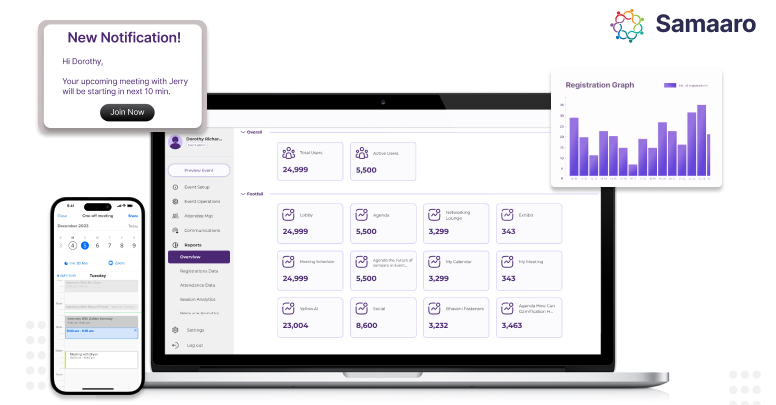
Ticket Sales and Attendance
Attendance figures and ticket sales are essential performance indicators that gauge the preliminary triumph of an event. By utilizing these metrics, one can quantitatively evaluate the extent and level of appeal of an event. Understanding attendance figures, however, necessitates a more nuanced examination than mere numerical data. By dividing attendee data into segments according to demographics, geographical locations, or registration sources, significant insights can be obtained regarding audience preferences and the efficacy of marketing approaches.
Examining ticket purchase patterns- including evaluating the influence of price levels or discounts, may provide insight into the effectiveness of your price strategy and if they have changed the overall revenue stream from the event. Furthermore, real-time knowledge of attendance patterns during the event (high attendance, first session versus second, etc.) will improve the planning and scheduling of future events.
Online vs. On-Spot Registration Ratio: Measure the proportion of attendees registering online versus those registering on-site.
Revenue Distribution Across Ticket Tiers: Analyse the sales distribution among different ticket categories to identify revenue streams.
Sales Patterns: Weekday vs. Weekend and Time of Day: Assess ticket sales trends based on the day of the week and time slots.
Lead Generation and Conversion Rates
Events provide substantial prospects for the generation of leads. In addition to data collection, lead quality analysis is of utmost importance. A discrepancy exists between leads generated during an event. Prioritizing post-event follow-up efforts can be facilitated by evaluating lead quality according to criteria such as industry relevance, purchasing intent, and levels of engagement during the event.
The conversion rates taken from prospects that were generated by the event clearly provide information regarding the effect of the event on the sales funnel – or pipeline – of prospects. Understanding the conversion journey from the first engagement that was initiated at the event all the way through to the final sale is vital for organizations to identify opportunities to improve or obstacles to conversion to reach the end goal with subsequent events.
Number of Qualified Leads Collected: Track the total count of potential leads gathered during the event.
Lead Conversion Rate from Event Engagement: Measure the percentage of event-generated leads that convert into customers.
Time from Lead Acquisition to Conversion: Determine the average duration it takes for event-acquired leads to convert into paying customers.
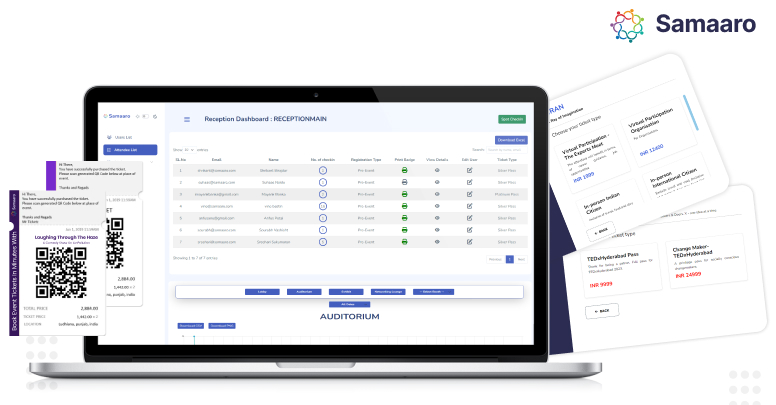
Engagement Metrics (Attendance, Duration, and Interactions of Sessions)
Evaluating attendee engagement metrics throughout an event yields invaluable insights regarding the most impactful content and activities for the attendees. Identifying the most captivating aspects of the event is facilitated by analyzing session popularity according to topics, speakers, or formats, in addition to monitoring session attendance. Moreover, an assessment of session duration or dwell times provides insight into the degree of audience engagement and curiosity regarding the presented material.
By doing interaction monitoring every session or activity, you are gaining an all-encompassing evaluation of how participants are participating through their interactions with polls, questions they presented, or contacts they have made. If you incorporate interactive technology, such as interactive equipment or apps, your ability to evaluate engagement will be magnified and can adjust during the event based on real-time feedback.
Session Attendance Rate: Measure the percentage of registered attendees who participate in specific sessions.
Average Session Duration: Calculate the mean duration attendees spend in event sessions or workshops.
Number of Interactions per Attendee: Track the average count of interactions (questions, comments) made by each attendee.
Social Media Impressions and Reach
It is critical to utilize social media in the digital age to expand the scope of an event. In addition to physical attendance, reach, impressions, shares, and engagement metrics across multiple social platforms serve as indicators of the event’s digital prominence and influence. By monitoring particular hashtags or discussions pertaining to events, organizations can assess audience sentiment and online sentiment in real-time.
Moreover, analysing social media engagement and interaction before, after, and during the event will provide a thorough perspective on the impact of the event on social. This will allow for the identification of successful approaches to social media, identifying important partners or attendees, and the development of future social media campaigns.
Total Reach and Impressions Across Platforms: Monitor the overall visibility and exposure of event-related content on social media.
Engagement Rate (Likes, Shares, Comments): Evaluate the level of audience engagement through likes, shares, and comments on event-related posts.
Sentiment Analysis: Positive vs. Negative Mentions: Analyse the sentiment of social media mentions related to the event.
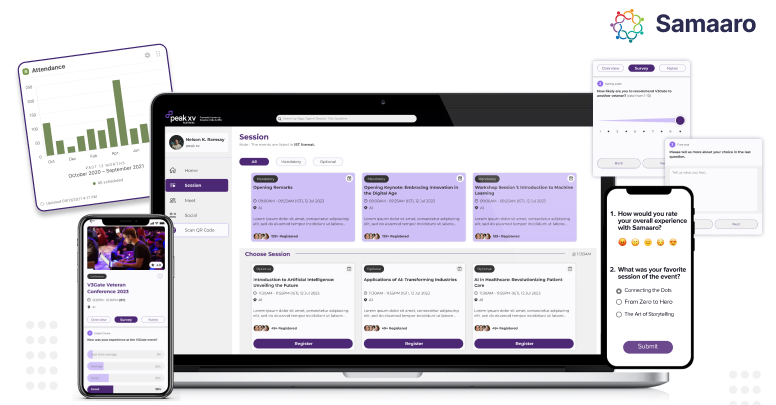
Customer Feedback and Satisfaction
The acquisition of exhaustive feedback from attendees via post-event surveys or evaluations is crucial for determining the level of customer satisfaction as a whole. Quantitative ratings yield a numerical evaluation, whereas qualitative feedback provides a more comprehensive understanding of the experiences, preferences, and areas requiring enhancement of the attendees.
Examining trends in feedback among demographic and participatory groups allows for the recognition of habits and issues that occur. This information helps organizations customize future events to address the varying needs of their participants. Moreover, responding quickly to positive feedback helps develop participant trust and loyalty.
Overall Satisfaction Score from Post-Event Surveys: Assess the general satisfaction level of attendees through post-event surveys.
Net Promoter Score (NPS): Measure the likelihood of attendees recommending the event to others based on a standardized scale.
Feedback on Specific Event Elements (Speakers, Content, Logistics): Collect feedback on specific aspects of the event to pinpoint areas for improvement.
Post-Event Conversions and Sales
It is critical to monitor sales and conversions in the aftermath of an event in order to ascertain its enduring influence on business results. By examining the purchasing behavior of attendants after the event, such as conversions and follow-up interactions, one can establish a link between event attendance and measurable business outcomes.
Revenue Generated Post-Event: Calculate the total sales or revenue directly attributed to the event after its conclusion.
Conversion Rate of Post-Event Leads: Measure the percentage of leads acquired during or from the event that convert into sales.
Upsell or Cross-Sell Opportunities Identified: Identify additional sales or upselling opportunities realized post-event.
Pre-Event Organization Techniques: Adapt event strategies in accordance with objectives. To maximize impact, employ targeted marketing strategies such as audience segmentation and personalized communication. The utilization of attendee data from previous events facilitates the improvement and targeting of strategies.
On-Site Engagement and Interaction: Drive engagement in your educational program through interactive sessions, networking, gamifying games, and immersive experiences. Engagement is heightened through technology and tools, such as virtual reality or event applications. Network and collaborate in innovative ways through networking activities, polls, or live Q&A.
Post-Event Follow-Up and Analysis: Utilize the gathered data and feedback from attendees to conduct an exhaustive analysis. Insights should be utilized to improve future events. Follow up with prospects in a timely manner to convert potential opportunities and capitalize on generated interest. By delivering exclusive post-event content or offers, attendance is further increased.
Beyond merely measuring returns on investment (ROI), event evaluation involves understanding how the event is contributing to the global plans of the organization. When you put the focus on these six key indicators, along with pre-planning and post-evaluation, you can optimize your events to the greatest extent possible and achieve specific, identifiable outcomes. Assessing return on investment (ROI) is more than just assessing the event, it is a continuous process of engaging in a development of strategies to ensure sustained success in future events.

Built for modern marketing teams, Samaaro’s AI-powered event-tech platform helps you run events more efficiently, reduce manual work, engage attendees, capture qualified leads and gain real-time visibility into your events’ performance.
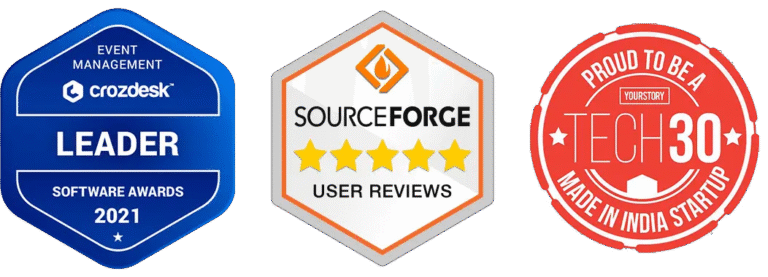
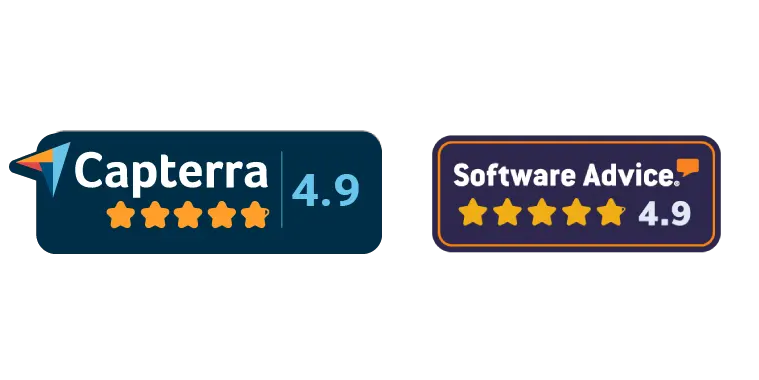
© 2025 — Samaaro. All Rights Reserved.